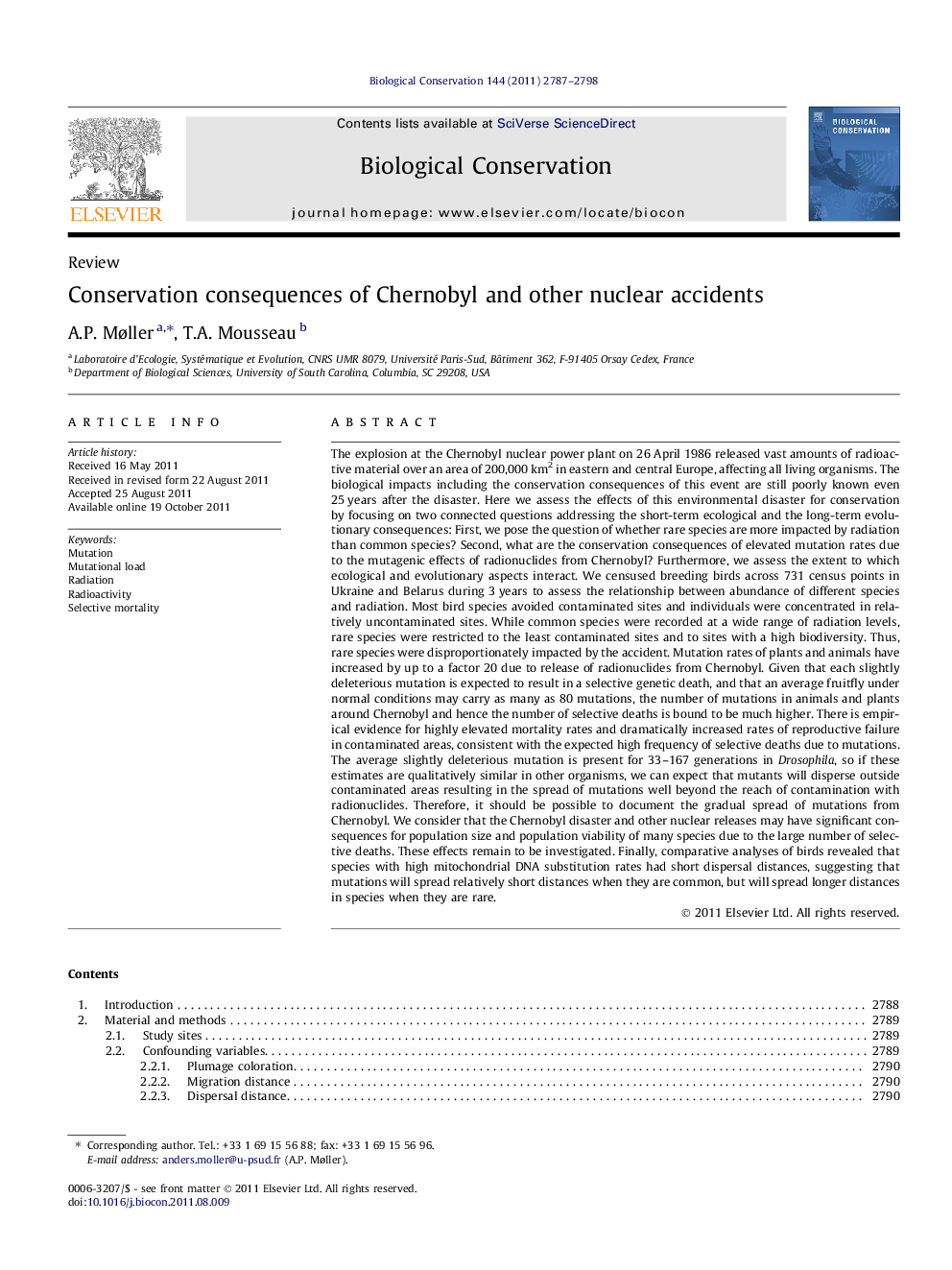| کد مقاله | کد نشریه | سال انتشار | مقاله انگلیسی | نسخه تمام متن |
|---|---|---|---|---|
| 6301195 | 1304537 | 2011 | 12 صفحه PDF | دانلود رایگان |

The explosion at the Chernobyl nuclear power plant on 26 April 1986 released vast amounts of radioactive material over an area of 200,000Â km2 in eastern and central Europe, affecting all living organisms. The biological impacts including the conservation consequences of this event are still poorly known even 25Â years after the disaster. Here we assess the effects of this environmental disaster for conservation by focusing on two connected questions addressing the short-term ecological and the long-term evolutionary consequences: First, we pose the question of whether rare species are more impacted by radiation than common species? Second, what are the conservation consequences of elevated mutation rates due to the mutagenic effects of radionuclides from Chernobyl? Furthermore, we assess the extent to which ecological and evolutionary aspects interact. We censused breeding birds across 731 census points in Ukraine and Belarus during 3Â years to assess the relationship between abundance of different species and radiation. Most bird species avoided contaminated sites and individuals were concentrated in relatively uncontaminated sites. While common species were recorded at a wide range of radiation levels, rare species were restricted to the least contaminated sites and to sites with a high biodiversity. Thus, rare species were disproportionately impacted by the accident. Mutation rates of plants and animals have increased by up to a factor 20 due to release of radionuclides from Chernobyl. Given that each slightly deleterious mutation is expected to result in a selective genetic death, and that an average fruitfly under normal conditions may carry as many as 80 mutations, the number of mutations in animals and plants around Chernobyl and hence the number of selective deaths is bound to be much higher. There is empirical evidence for highly elevated mortality rates and dramatically increased rates of reproductive failure in contaminated areas, consistent with the expected high frequency of selective deaths due to mutations. The average slightly deleterious mutation is present for 33-167 generations in Drosophila, so if these estimates are qualitatively similar in other organisms, we can expect that mutants will disperse outside contaminated areas resulting in the spread of mutations well beyond the reach of contamination with radionuclides. Therefore, it should be possible to document the gradual spread of mutations from Chernobyl. We consider that the Chernobyl disaster and other nuclear releases may have significant consequences for population size and population viability of many species due to the large number of selective deaths. These effects remain to be investigated. Finally, comparative analyses of birds revealed that species with high mitochondrial DNA substitution rates had short dispersal distances, suggesting that mutations will spread relatively short distances when they are common, but will spread longer distances in species when they are rare.
⺠Abundance of rare species was negatively impacted by the Chernobyl accident. ⺠Mutation rates increased by up to a factor of 20. ⺠The Chernobyl disaster may have significant consequences for population size. ⺠Birds with high mitochondrial DNA substitution rates dispersed short distances. ⺠Mutations will spread relatively short distances when they are common.
Journal: Biological Conservation - Volume 144, Issue 12, December 2011, Pages 2787-2798